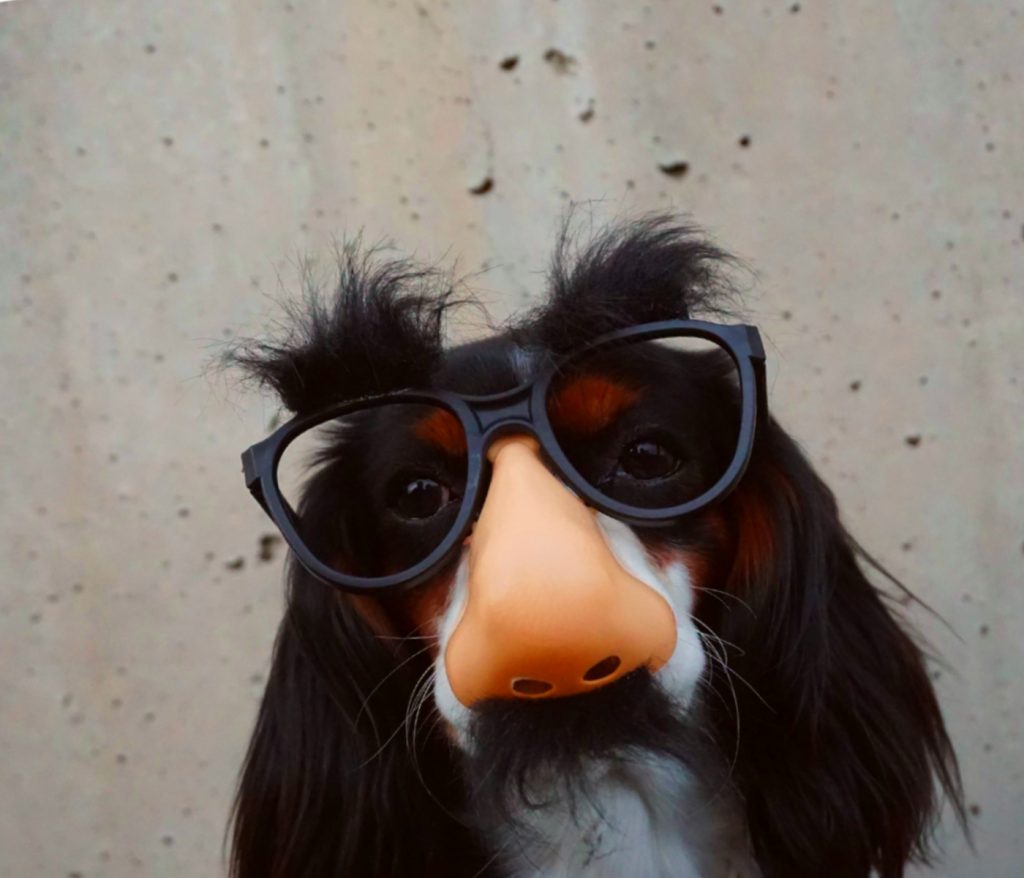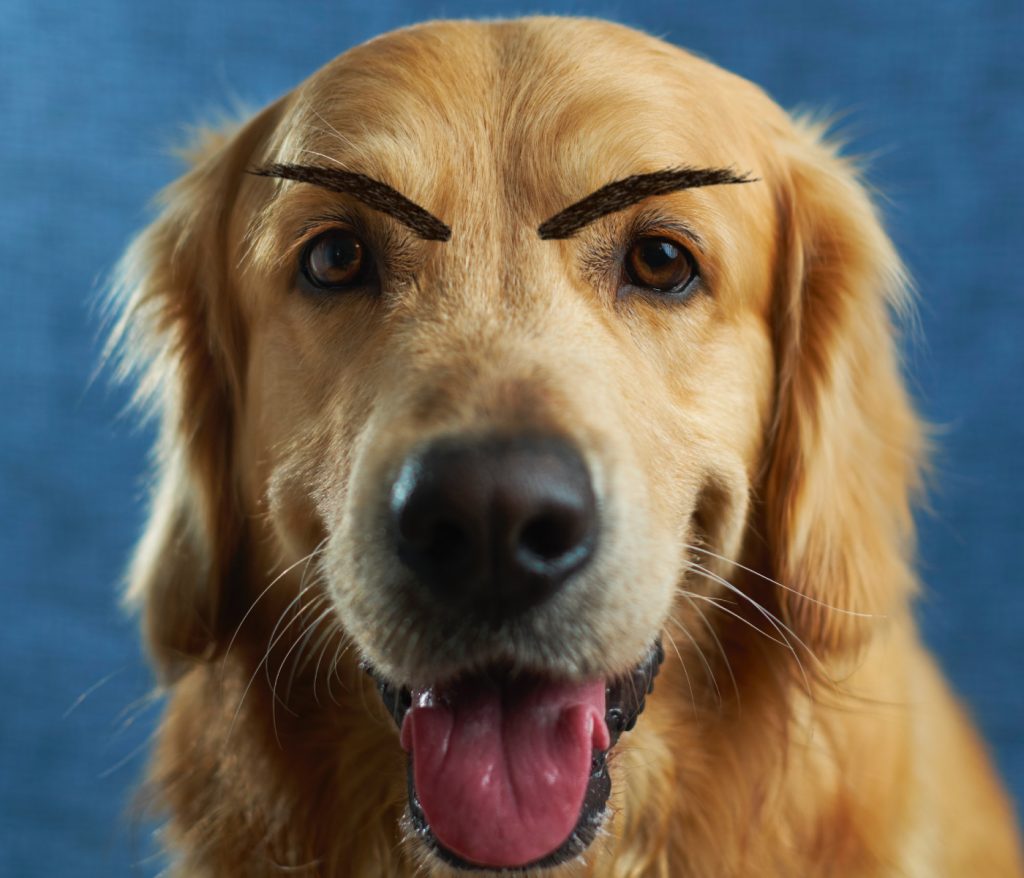Table of Contents

Disclaimer: I am not a vet, but an enthusiastic pet owner with a diverse knowledge of dogs, cats and other pets. Writing well researched articles recommending dog friendly products to in-depth guides. Please seek a certified vet for a professional opinion on your dog, these articles are written from my own research and opinions. Please read our Terms and Conditions for more! As an Amazon associate I earn from qualifying purchases.
Dogs are known for their expressive faces, capturing our hearts with their adorable eyes and playful grins. With those animated looks telling you everything they feel.
Even the RSPCA looked into a study explaining how dogs move their faces in particular ways to gain attention and praise. They found that dogs often rose their faces and “eyebrows” when being watched to show certain emotions.
So that begs the question, have you ever wondered if dogs have eyebrows? While it may seem like a simple question, the answer is a bit more difficult to explain.
In this article, we will explore canine facial expressions, hidden mimic language and shed light on whether dogs have eyebrows.
Do dogs have eyebrows?
The brief answer is yes, dogs have eyebrows. But they are harder to see than human eyebrows. As dogs have developed through domestication over centuries their facial structure (bones and muscles) and expressions have changed.
Dogs are known as “mans’ best friend” for a reason. They are able to show deep emotion through their facial features and body language.
Just like humans, dogs have a brow ridge bone above their eyes, which can be seen more predominantly on certain breeds. They have also developed strong facial muscles which are used to move certain parts of skin around the eyes.
Are dogs eyebrows just bones?
Dogs do have brow ridges, which are bony structures above their eyes that can create the illusion of eyebrows.
These ridges, varying in size and prominence across different breeds. Brow ridges can give a dog’s face a shallow or deep appearance. Additionally, the colour and patterns of fur around the eyes can create markings that resemble eyebrows.
Which breeds have obvious eyebrow markings?
Some breeds have distinctive colour and patterns of fur around the eyes which make the eyebrows clearer to see. These breeds include:
- Rottweilers
- Dobermans
- German Shepherds
- Labrador Retrievers
- French Bulldogs
- Some Foxhounds
Why do dogs have eyebrows?
To look at why dogs have eyebrows in the first place it’s worth looking at the relationship between humans and dogs. During dog domestication many features, looks and behaviors of dogs has changed.
It maybe no surprise to know that, dogs originate from wolves, but nowadays wolves are drastically different in characteristics and behavior.
As humans adopted dogs for protection and companionship their bond became stronger.
Dogs developed facial muscles as a way to communicate with humans. According to PNAS dogs use their ability to “read and use human communication in ways other animals cannot” this allows dogs to decipher and be more skillful in using human communicative cues.
This transfers to eye contact, PNAS also suggest “mutual gaze between dogs and humans seems to be a hallmark of the unique relationship”.
So to conclude, dogs have eyebrows to primarily express feelings and empathy towards humans (their natural leaders). This allows them to communicate and convey their thoughts and through this process exchange chemicals. But more on that later.

Credit Unsplash User @unkown
Can dogs move their eyebrows?
Dogs are sociable animals. Sociable animals, whether that be wolves, lions or even humans share expressions through their facial movements and behavior. An eyebrow raise or dip is a form of expression used to convey certain emotions.
Dogs can use their eyebrows which are controlled by small muscles to interact with humans and show emotion.
Over centuries of domestication, dogs have learned to live closely with humans. Allowing interactions like eye contact, sharing facial expressions and mirroring behavior important to build a bond and connection. Communication gives both parties good emotional experiences and produces Oxytocin.
The chemical Oxytocin plays an important role in social interaction and positive behavior between dogs and humans. Oxytocin is a natural hormone which has been present in animals and humans since the start of evolution. Also found in childbirth, Oxytocin is important for bonding. Allowing dogs and humans to gain each others trust and recognition.
Also, it’s worth mentioning, in many studies it was noted that dogs with higher levels of Oxytocin made more non-verbal contact when they faced their owners.
Why do dogs move their eyebrows?
So far we’ve learnt why dogs have their eyebrows. But what exactly do dogs want from moving their eyebrows?
Raising the eyebrows
The classic “puppy eye”. Dogs like to raise their eyebrows as a demand for attention. They know they’re cute, they know it works and they know it’s a manipulative gesture. Whether that’s for food or a new toy.
Dogs can also be surprised when raising their eyebrows. Like when they hear a new sound they will often tilt their head and raise their eyebrows in hope for something new and unique.
Moving the eyebrows
Moving or wiggling the eyebrows normally means a dog is playing or is satisfied. Dogs often wiggle at humans to convey companionship and happiness.
Dogs frowning
Unlike humans, when dogs frown they don’t necessarily want to convey that they are sad or angry. Dogs often frown to concentrate, on toys, other animals or objects in the distance.
Staring with eyebrows
Dogs can lock eyes with humans, communicating affection, trust, or a desire for attention. A dogs gaze lies in the combination of their eyes and the muscles around them, which allow them to create an intense and deeper connection with their human companions.
Do dogs have whiskers above their eyebrows?
Yes, generally dogs have 4 different types of whiskers. Some are more prominent than others on different breeds.
The main 4 are:
- Genal Whiskers: Whiskers which line the cheek, which tend to help with vision.
- Supraorbital Whiskers: The whiskers which sit above the eyebrow which assist the dog in moving and sensing
- Mystacial Whiskers: The most prominent whisker, which are usually on your dogs upper lip.
- Interramal tufts: Chin whiskers, which sit on your dogs chin or neck. They help the dog sense what’s below them.
Final Thoughts
While dogs may not have eyebrows in the same way humans do, they show a remarkable range of facial expressions and non-verbal clues that allow them to communicate their emotions effectively.
Dogs rely on a combination of ear positions, eye movements, and overall body language to convey their feelings not just their eyebrows. Ensuring a strong bond is just as important for dogs as it is for you. After all, don’t bite the hand that feeds you!
So, next time you look into your furry friend’s eyes, despite not having traditional human eyebrows this does not prevent their ability to express themselves – they truly convey to us their thoughts through their entire face.
FAQ
To wrap up this article, let’s address some frequently asked questions about dogs and their body language.
Q: Do dogs mirror their owners looks?
Studies have already shown dogs do copy their owners expressions and body language. Many social dogs will even mirror the body language of other dogs around them, especially if they have a a good connection. Dogs do this to show empathy, so when your dogs mirrors your behavior they maybe compassionate to you.
Q: Should you cut your dogs eyebrows?
Many dog owners and groomers mistake dog whiskers for eyebrows. Dog whiskers located above the eyes, are incredibly important for movement in darkness, cleaning the eyes and to help dogs communicate.
Cutting these vital sensory perception tools are not good for your dogs well-being. According to PetMD, removing whiskers wont just cause stress to your dog but also cause disorientation.
Q: Which dog breeds don’t have eyebrows?
Almost all dog breeds have eyebrows, or a muscle which they can control above their eyes to convey emotions. However, older dog breeds, which are more similar to wolves like Siberian Huskys don’t have these muscles.
Q: Do Bulldogs have eyebrows?
Yes, despite the way some Bulldogs look, they do have thick flaps of skin and muscles above their eyes. Bulldogs are known for conveying their emotions, which make them a great breed for families and individuals alike.


5 thoughts on “Why Do Dogs Have Eyebrows?”
Comments are closed.